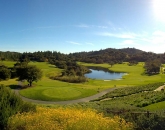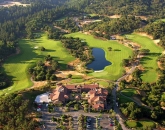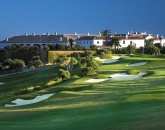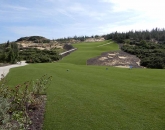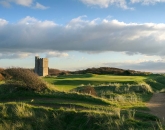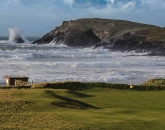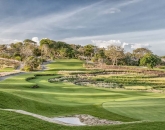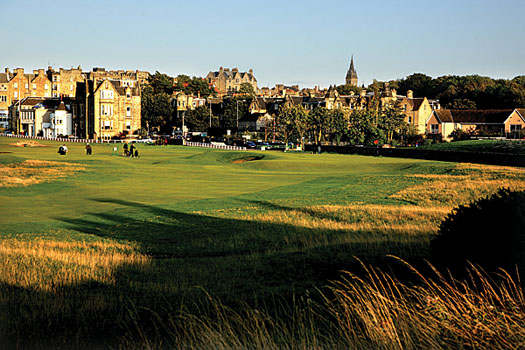
It was one of the R&A stalwarts, Sir Hugh Lyon Playfair, who really did more for St Andrews than anyone before or since. The first clubhouse, the railway line and the town's beautiful architecture were all the fruits of Playfair’s labour. He also turned his eye to the course. The first and second holes were in danger of being lost to the sea altogether. Crashing storms would edge away the fairway and leave debris across the links. According to Tom Jarrett and Peter Mason in their book, St Andrews Links: Six Centuries of Golf, Playfair in 1847 or thereabouts, built three breakwaters to stop the sea from coming onto the links. He filled the space in between with the town’s rubbish, sand and soil. This increased the fairway from 80 yards to around 135 yards and the reclamation also explains why the 18th is naturally undulating and the first hole flat like a billiard table.
The first step towards the course that we know today is when David "Old Da" Anderson took on the role of keeper of the links in 1851. Da was one of the town’s great characters and used to sell ginger beer from a small stall on the fourth hole. He would later open his own shop on the links with his son – Jamie, a three-time Open Champion winner – next door to Old Tom Morris from 1873 – 82.
Da could not stand the constant interfering and commenting on his work and only lasted four years in the job. However, before he left, and following an R&A directive in May 1855, he placed a second pin on the seventh, "High Hole". Double greens had been muted from 1832 according to historian JB Salmond and most writers refer to the putting surface that is shared by the fifth and 13th holes as being the first.
When Playfair became captain of the R&A in 1856, the club employed the great champion of the era, Allan Robertson, to create more double greens. They paid Robertson for this work right up until March of 1859 when he died. Given that the Eden Estuary acted as a boundary at the foremost end of the course and that they therefore had little ground to expand into, the greens were developed at the sides to give them their lozenge shape. The march stones on the second and fourth fairways mark out the boundary of the original course in the early 1800s. The G on one side of the stone denotes the golfing ground and the C on the other denotes the owner of the land, the Cheape family.


